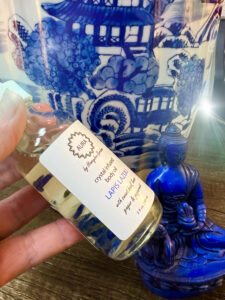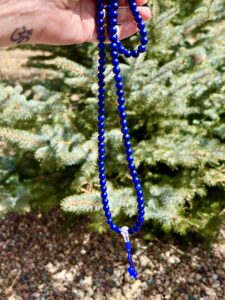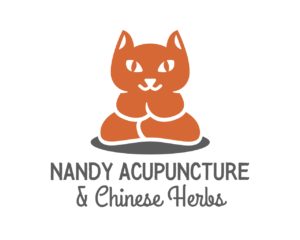
Lapis in the clinic
Traditional Chinese Medicine may be best known for acupuncture but includes many other powerful healing modalities such as herbal medicine, tui na massage, cupping, moxibustion, dietary therapy, tai chi and qi gong practices, and geomancy and feng shui. Less well known, stone medicine has also been an integral part of Chinese medicine since its development in ancient history. To a culture steeped in the observation of nature, stones and minerals have always been held in high regard. Stone medicine uses the rocks and minerals naturally created by the earth for healing purposes, reminding us that we are a part of nature and helping us reclaim our relationship to the natural rhythms that we have become separated from.

Lapis for the home and everyone in it!
Stones can be used as an adjunct to all Chinese medicine modalities. They can be placed therapeutically over acupuncture points, used as tools in massage, warmed with the heat of moxa or infrared lamps, placed around our environment in feng shui, and used during qigong practices to generate energy or focus the mind during meditation. Their mineral content gives them a role in dietary therapy and some are used in herbal formulas and food, and infused in water to drink as an elixir.
The use of Lapis Lazuli can be traced back to many different civilizations, most notably the ancient Egyptians who used it for protection in both life and the journey of the dead into the afterlife. This deep blue stone is the metamorphic formation of many different minerals, including lazurite, pyrite, calcite and white dolomite. The most valuable lapis lazuli is an intense, deep, and uniform blue, with gold flecks of pyrite scattered and swirled throughout, resembling a starry night sky and the cosmos itself!
Benefits attributed to lapis lazuli include:
- Health and wellbeing. Because of its association with the third eye chakra, lapis lazuli can help alleviate migraines, especially those related to stress as it helps clear and calm the mind. It can also help with respiratory and nervous system issues, as it enhances circulation and improves cardiac rhythm. It may even play a role in lowering blood pressure. Lapis lazuli is very beneficial to the throat, larynx and vocal cords, and helps regulate the endocrine and thyroid glands. It is also useful in the treatment of insomnia, vertigo and hearing loss, with the ability to soothe many ear and nasal passage problems. Lapis is beneficial for women suffering from menstrual irregularities and relieves cramps, stiffness, and lumbago.
- Skin and Beauty. In the form of a crystal facial tool, lapis lazuli helps soothe skin irritations and inflammation and reduces the appearance of blemishes and redness, balancing the skin. It is often used to relieve and cool bruises, insect bites and acne.
- Mental/Emotional Health. Related to the third eye chakra, lapis lazuli is healing for many mental health issues and brings a sense of clarity, calm and peace. It is especially useful in cases of past trauma and depression.
- Spirituality and Creativity. Lapis lazuli is considered to be a very powerful stone in reaching spiritual attainment in several traditions. It helps bring clarity and insight to one’s thoughts and aids in self-expression and communication.
- Traditional Chinese Medicine. Lapis lazuli (Tian Qing Shi, “celestial blue stone”) helps harmonize and balance the yin and yang—the deepest and most fundamental aspiration of any Traditional Chinese Medicine treatment. From an herbal perspective lapis is classified as sweet and cooling with a strong affinity for the liver, heart and kidney. As it has a descending energetic quality, it especially benefits conditions where heat is rising such as hypertension and hyperthyroidism, as well as stagnation conditions in the lower body like ovarian cysts, constipation and urinary difficulties.
Tian Qing Shi purifies and nourishes the blood to clear emotional distress and calm the shen (spirit). It is used as part of the treatment for insomnia, irritability, restlessness, anxiety, depression, bipolar disorder and palpitations.
Tian Qing Shi relaxes and regulates the liver, which can soothe muscle spasms, cramping, and muscle and joint pain. It is also used to strengthen poor vision and hearing and treat tinnitus.
For most healing purposes, Tian Qing Shi is placed upon various acupuncture points or chakras. It can also be intentionally worn as jewelry to obtain continuous healing benefits. Occasionally it is taken internally as an infused water, but only short term and under the guidance of a practitioner trained in stone medicine. In feng shui Tian Qing Shi is used as an enhancement in the wealth and prosperity areas.

Nandy’s lapis lazuli mala beads
Perhaps nothing illustrates better the reverence of the deep blue stone and its relationship to healing than the fact that one of the most honored figures in the Tibetan Buddhist pantheon is the blue Medicine Buddha, praised as the Lapis Healing Master. Buddha himself once prayed: “I beseech you, Blessed Medicine Guru, whose sky-colored, holy body of lapis lazuli signifies omniscient wisdom and compassion as vast as limitless space, please grant me your blessings.” Medicine Buddha’s mantra is chanted incessantly and devotedly throughout Asia to help heal all types of afflictions and suffering and prevent untimely death for all sentient beings. I like to recite this blessed mantra one round on my lapis lazuli mala beads before treating each patient. It is:
“tayatha om bekandze bekandze maha bekandze radza samudgate soha”

 Our office is conveniently located in the beautiful 80 Big Springs office building in Nederland, CO. Plenty of close parking is readily available.
Our office is conveniently located in the beautiful 80 Big Springs office building in Nederland, CO. Plenty of close parking is readily available.
Do you sell these mala beads?
I would like some.
Thank you.